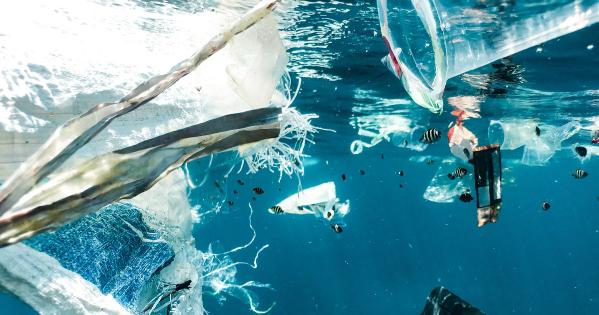Microplastic Research, a New and Necessary Field of Study

The investigation of microplastic pollution around the world has been growing more and more with recent discoveries. Microplastics are small plastic particles that are less than five millimeters in diameter. There are both primary and secondary microplastics, originating from various products. Primary microplastics are man-made products that are naturally small, like microbeads, which can be found in facial soaps and body washes. They can also be microfibers which shed from clothing materials that are made with plastics for cheap production. Secondary microplastics are particles that break off from larger plastic items like water bottles.
None of these particles easily break down in natural environments, and with more investigation, researchers are learning about their harmful effects towards animals, the environment, and human health.
Diving into the exploration of microplastic pollution is American University professorial lecturer and Director of Environmental Science Undergraduate Studies, Jesse Meiller. Meiller is a marine ecologist and environmental toxicologist who works alongside Barbara Balestra in her microplastic research. Balestra is the Environmental Science Lab Director at AU and has a background in paleoceanography and climate change. They lead a microplastics research lab, working alongside undergraduate and graduate research assistants inspecting the world of microplastics in various media from local waterways and environments in Washington, DC. They are hoping to build their program, as the field of microplastic research globally is fairly new and underdeveloped, and work with local organizations to mitigate the microplastic pollution problem.
The microplastic research uses various strategies to collect and analyze samples from water, sediment, and biofilms. Faculty and students work together to visit the collection sites located on the Anacostia River to be filtered, sieved, and analyzed under a microscope. The microplastics are classified by type, color, and size to produce data surrounding the concentration of microplastics in the environment. The students working with the professors have had opportunities to build lab skills and develop lab methods. “All of our lab student help has contributed to the growth of the projects, the sharing of knowledge, and hopefully I have helped each of them in building a new set of skills and a more extensive knowledge base about microplastics specifically, but research in general, that they can take forward in future endeavors.” In all of the science programs at AU, students can benefit from learning from skilled faculty members.
Balestra says she has “learned how AU students are involved in environmental issues and how much they care about them.” Meiller explained that her favorite component of doing this lab work is the educational component. She explained, “I love teaching and am excited to be able to share my knowledge about microplastics with students who work with us in the field and the lab, as well as to be able to share our findings with local organizations, schools, and agencies.”
Relating to the future of the microplastics research, the professors hope to continue sampling along the Anacostia River sites to examine the changes in microplastics over time, seasonally. There is also a hope to do more chemical analysis of the microplastics found in the samples to gain knowledge on the potential sources of this microplastic pollution. Additionally, there is overlap between this research and microplastic research led by Dr. Stephen MacAvoy in understanding the organic chemistry and biochemistry of the samples collected.
In terms of the professor’s hopes for the future of microplastic research globally, they hope there is more contribution, identification, and quantification of microplastics found in various places. Dr. Meiller first started working in this research field, there were very few studies looking specifically at microplastic existence in freshwater ecosystems, but she hopes to be able to contribute to, “that body of knowledge and also to share what we learn with students ranging from elementary, middle and high school age to college and grad school, and also the general public.” There is also room for collaboration with organizations like the DC Department of Energy and the Environment to share what is found in the research and ultimately work to help manage microplastic pollution and develop solutions and preventative measures to mitigate a growing problem.